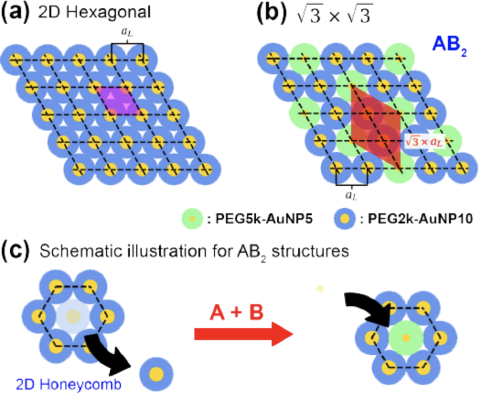
Scientific Achievement
Two distinct complex two-dimensional binary superlattices were self-assembled by co-crystallizing gold nanoparticles (AuNPs) of two distinct sizes.
Significance and Impact
The packing density of mixed NP systems (binary, ternary, and higher order) can be tuned by manipulating their effective diameter by the choice of grafting. Such control enables designing self-assembled NPs in photonics and plasmonics applications.
Research Details
- Grafting AuNPs with polyethylene glycol (PEG) at various lengths was confirmed by various techniques – DLS, UV-vis, TGA.
- Surface sensitive X-ray diffraction methods at NSLS-II are used to determine the structures of the assembly and co-crystallization.
- The observed √3x√3 and 2x2 complex binary superlattices are derived from the hexagonal structures of the single components.
Hyeong Jin Kim, Wenjie Wang, Honghu Zhang, Guillaume Freychet, Benjamin M. Ocko, Alex Travesset, Surya K. Mallapragada, and David Vaknin, "Binary Superlattices of Gold Nanoparticles in Two Dimensions," J. Phys. Chem. Lett. 2022, 13, 3424−3430.
